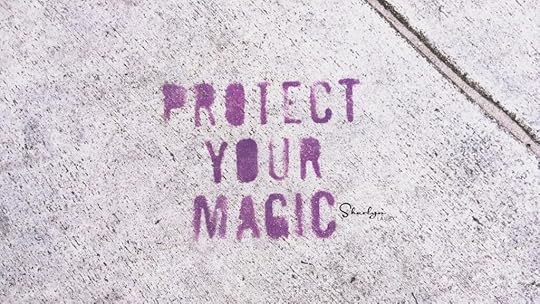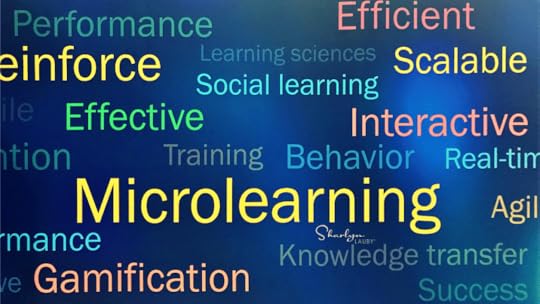Sharlyn J. Lauby's Blog, page 16
October 27, 2024
Try a MaxMix Format During Your Next All Employee Meeting

Estimated reading time: 3 minutes
Many organizations like using all employee meetings to convey information. It allows the company to make sure that everyone hears the same message. Often during these meetings, senior management will want to give employees the opportunity to ask questions or provide feedback. Which is great – we should be encouraging more dialogue and getting feedback. Right?!
Except that standing up in front of the whole company can be overwhelming. Employees might be nervous, so they don’t say anything. In my experience, employees will often wait until after the meeting, come to HR, and ask us the question. Which kinda defeats the purpose of encouraging that open conversation. The good news is there’s a way to encourage participation in a less intimidating format.
Years ago, I worked for a company that had a unique meeting format called a MaxMix. It was designed to be a meeting with maximum engagement by a mixture of people. Hence the name MaxMix. Here’s how it worked.
The meeting room would be set in rounds, so employees were sitting at tables with other employees. During the meeting, the senior management team would do their presentations, etc. Then employees were given time to work with their table mates to come up with any questions or comments they wanted to share. The table would designate a spokesperson who would ask the question or make the comment. Microphones would be placed around the room and the designated spokesperson could ask the question of senior management.This meeting format had several advantages.
Employees were often sitting with a group of people who possibly were not a part of their department. It was a great opportunity for them to build relationships with others.When discussing questions and comments, sometimes employees got their answer from another employee. This saved the employee the embarrassment of standing in front of the whole company to ask a question because several of their colleagues already knew the answer. It’s not that the employee would get called out during the meeting. But I’ve had employees tell me that they were very happy to learn the answer without standing up in front of everyone. The table got to decide what the most pressing questions and comments to share were. Employees gained some perspective about priorities.Because the table teams designated a spokesperson, the senior management team doesn’t know who brought up the question or comment initially. This can be valuable when there are senior managers who (unfortunately) get too focused on who asked the question instead of the actual question content.We would use this meeting format for general all employee meetings as well as meetings to convey employee engagement survey results. Employees came to expect it, and they looked forward to chatting with their colleagues as well as getting answers. The management team liked the meeting because the questions and comments were well thought out (because a group of employees worked on them).
While I’ve never done a MaxMix meeting in a virtual setting, it seems like it would work for virtual meetings as well. Employees could go into virtual breakout rooms to discuss and then come back together for the question-and-answer session.
Next time you’re looking to try something new in your all employee meetings, think about the MaxMix format and how it might fit into the agenda.
Image captured by Sharlyn Lauby while exploring the streets of Nashville, TN
The post Try a MaxMix Format During Your Next All Employee Meeting appeared first on hr bartender.
October 24, 2024
What Employers Need to Know about Perimenopause and Menopause

Estimated reading time: 7 minutes
A couple of months ago, the Society for Human Resource Management (SHRM) released their annual employee benefits survey. I really like reading this survey to see if there are any trends that employers should be aware of. One trend I noticed in this year’s survey was an increase in conversation related to menopause.
According to SHRM, 17% of employers provided menopause related support such as counseling and education. With women aged 45-54 comprising 9.3% of the U.S. labor force, this is definitely a relevant topic. In fact, there’s a bill in Congress now titled “Advancing Menopause Care and Mid-Life Women’s Health Act”. Something to watch in the months to come.
The reason I wanted to talk about menopause today is because we need to. Menopause has been one of those subjects that for a long time we weren’t supposed to discuss. I’m glad to see that’s changing because menopause impacts everyone – not just the people who experience it. And that includes employers.
To help us understand more, I had the opportunity to chat with Shelly MacConnell, chief strategy officer for WIN, the nation’s leading family-building and family wellbeing company. WIN supports families through every stage of life – from pre-conception and fertility to parenting, healthy aging, and beyond.
Please note, the information in today’s article is for informational and educational purposes. It is not a substitute for professional medical advice. If you have any specific questions, you should consult with a healthcare professional.
Shelly, thanks so much for being here. Let’s start with a couple of definitions. What is menopause? And what is perimenopause?
[MacConnell] Menopause refers to the point in time when women cease to have their periods. This is the result of hormonal changes, primarily a decrease in estrogen. Perimenopause (sometimes known as menopausal transition) can take place in the years leading up to that point, when a woman may have changes in their monthly cycles and many other symptoms – many of which she may not even know are related to perimenopause. Once periods have ceased for 12 months, the postmenopausal phase begins.
Menopause typically occurs between the ages 45 and 55 for women but can also be triggered by a hysterectomy or surgical removal of the ovaries. Symptoms can last 7-14 years depending on lifestyle, health, etc. For simplicity purposes, perimenopause, menopause and postmenopause are all often referred to generally as menopause.

The hormonal shifts of menopause do not just impact fertility, they can impact nearly every system of the body. In addition to the more well known vasomotor symptoms such as hot flashes, brain fog, and sleep disruptions, symptoms can also be much more serious and include increased cardiovascular risk through the increase in blood pressure and cholesterol as well as heart palpitations, a decreased sensitivity to insulin which can increase insulin resistance, prediabetes and diabetes, increase in and re-distribution of weight, musculoskeletal and joint pain, changes in vaginal health and sexuality, psychological changes that lead to increased rates of depression and anxiety, digestive issues such as reflux, urinary complications, and even things like vertigo and tinnitus. The list goes on.
Why would perimenopause and menopause be important to an organization?
[MacConnell] Considering all the physical impacts, menopause is not just a healthcare concern; it is a business concern that all organizations should consider. A study from the Mayo Clinic estimates that the US economy loses over $26 billion annually due to menopause, including $1.8 billion in lost workdays and $24.8 billion in medical expenses. In fact, an astonishing 99% of women feel that menopause symptoms have negatively impacted their career. These figures show just how important it is for organizations and employers to address this stage in life particularly as women in menopause and transitioning to menopause may be at the height of their professional accomplishments and contributions.
In addition to the potential impact on organizational performance, there is a healthcare cost consideration as well. Many women (and their OB-GYNs) are unaware that these symptoms are related to menopause and may be seeing several doctors to address each issue – perhaps with limited success – when all may be related to a single underlying cause. It’s also important to note that men also experience hormonal shifts as they age or andropause–even as menopause care in the workplace becomes more prevalent, men are often not addressed by benefits and programs. Andropause also impacts men adversely in the workplace with 51% reporting a deterioration in work performance due to symptoms.
What is the impact of untreated perimenopause symptoms for working women?
[MacConnell] Designing programs and benefits that address this sector of employees is critical. Less than 40% of women feel that they receive support for menopause and only 26% of them said they received support from formal work policies or programs.
Unaddressed menopause symptoms and symptom-related challenges often force women out of the workplace with 13% saying they had to leave their jobs and another 15% saying they’ve considered leaving their jobs–out of these women, 44% were senior leaders and executives. Even those that do not leave the workplace feel there is disruption to their career with 41% reporting some level of negative impact on their career progression.
I’ve heard that some organizations are offering menopause-related benefits. Can you give us some examples of what a benefit might look like?
[MacConnell] While menopause benefits are becoming more prevalent in the workplace, only about 15% of companies currently offer them despite 64% of women saying they want menopause-specific benefits. More concerning, only one in five OB/GYNs receive menopause training leading to 73% of women not receiving the necessary treatment for menopause symptoms.
This is why, last year WIN rolled out our Powerpause program, a comprehensive and inclusive solution offering end-to-end perimenopause, menopause, and andropause (low-T) services that support both physical and mental wellbeing. This includes 24/7 on-call clinical guidance through nurse care advocates, evidence-based protocols, a vetted virtual network of expert-trained providers, digital experience to support care and comprehensive educational resources.

As organizations are thinking about benefits, they also have to consider the law. Are there any existing laws that organizations need to keep in mind when they are implementing a menopause-related benefit?
[MacConnell] Similar to in vitro fertilization (IVF) coverage, mandated menopause coverage varies state by state. Louisiana began requiring Medicaid and private health insurance plans to cover menopause and perimenopause treatment earlier this year and a similar bill is in the works in California. As menopause and andropause care and coverage becomes more available, it is important for companies considering benefits to work with a company that can help them navigate state-by-state laws.
Last question. As a human resources professional, we say to companies that want to offer a new benefit, “Talk to your employees!” and “Find out what employees want!”. For organizations considering menopause-related benefits, how can they initiate a conversation with their employees without coming across as prying into someone’s personal lives?
[MacConnell] Menopause is only recently becoming a conversation discussed in the workplace and there is still more work to do to destigmatize and normalize the topic further. A study showed that 58% of women feel uncomfortable talking about their symptoms at work, however those with female managers and those that already have menopause benefits in place feel more open about discussing.
The report also shows that employees typically feel more comfortable talking to colleagues over HR about menopause. Setting up anonymous surveys or employee-led resource groups may be a good access point to learning more about employee sentiments towards menopause and menopause benefits in a safe space. Additionally, normalizing conversations around menopause begins with a company’s leaders and we encourage them to set the course for others to follow. Lastly, companies should also offer educational resources to their employees on the topic, how to broach it at work, and more.
I want to extend a huge thanks to Shelly for sharing this information with us. If you would like to learn more, check out the WIN website. Shelly also reminded me that October is Menopause Awareness Month, so it may be a timely tie-in to start the conversation in your organization.
Organizations want employees to do their best work. That means organizations want employees to be healthy. We can’t talk about employee health and wellbeing without talking about menopause and andropause.
The post What Employers Need to Know about Perimenopause and Menopause appeared first on hr bartender.
October 22, 2024
How to Implement an Artificial Intelligence Policy [Part 3]

Estimated reading time: 6 minutes
It’s one thing to write a great policy. It’s something different to implement it.
We’ve been talking about artificial intelligence (AI) policies in this series. The first article focused on why organizations need to have both AI strategies and policies. In the second article, we discussed some things to consider when writing an Artificial Intelligence policy. Today, I want to wrap up this series with a conversation about implementing policy.
To offer some insights, I’ve been chatting with our friend and attorney Carrie Cherveny, chief compliance officer and senior vice president of strategic solutions at HUB International. In her role at HUB International, Carrie works with clients to develop strategies that ensure compliance and risk mitigation when it comes to benefits and employment practices.
Just a reminder, because we are talking about human resources policy, please keep in mind that Carrie’s comments should not be construed as legal advice or as pertaining to any specific factual situations. If you have detailed questions, they should be addressed directly with your friendly neighborhood employment law attorney.
Carrie, thanks for discussing this important topic with us. One of the things that occurred to me during our conversation is that not only do organizations need to have policies in place for the use of AI but so do human resources departments. Is there a process you could suggest for HR departments needing to create an Artificial Intelligence policy for themselves?
[Cherveny] There are a number of ways HR is using AI today. We’ve already talked about recruiting but there are many other opportunities for HR to create efficiencies and improve the employee experience.

New Hire Onboarding: For example, imagine a gamified onboarding experience for a cohort of new hires. The games can be designed to orient the employees to the company, build work relationships, and develop a sense of belonging for the new employees. The game may be a scavenger hunt or other contests and exercises where employees engage in friendly competition. Employees could be challenged to find three fun facts about employees in other departments and teams, learn about other job functions in the organization, and identify various process or handbook policies. These activities can be built in a gamified system and tracked on leaderboards with prizes for reaching new ‘levels’ or milestones.
Learning and Development: Today, AI can learn a person’s voice and apply it to training content. Likewise, AI can take content, add avatars and create a presentation. AI can even suggest the content for the topic and build the entire training program. These tools and resources can create significant efficiencies as HR addresses employee learning opportunities. HR can use AI for upskilling workers, teaching them new subject matter to grow their career and they can do using their own voices.
Time, Attendance, and Payroll: Reliance on automated timekeeping and monitoring systems without proper human oversight can create potential compliance challenges with respect to determining hours worked for purposes of federal wage and hour laws. AI may incorrectly categorize time as non-compensable work hours:
Worker activity Productivity/performance Keystrokes Eye movementsInternet browsingAI should not determine whether an employee is performing ‘hours worked’ under the Fair Labor Standards Act (FLSA). AI will not be able to determine if in substance, the employee was ‘suffered or permitted to work’ and thus performed ‘hours worked’ under the FLSA.
While AI provides various opportunities for HR efficiencies, it also poses several risks. The Department of Labor has issued a Field Assistance Bulletin detailing risks described below:
Unpaid Time: AI also poses a risk when it may make determinations regarding unpaid meal breaks. Employers must ensure that employees are completely relieved of duty for time to be counted as unpaid break time. Auto meal break deductions and other longer break periods may result in an FLSA violation (including nursing mother breaks). Likewise, AI poses the same risks and challenges with regard to ‘waiting time’. AI may improperly auto deduct the waiting time.
Geofencing: These systems use GPS technology from an employee’s phone or other wearable device to determine the worker’s location relative to a job site. AI backed geofencing systems track employees’ locations and automate the clocking in and clocking out process, based on the employee’s location hours worked. While ‘geofencing’ has been available for some time, the addition of AI compounds the risk that payroll system will improperly clock-out an employee simply based on location and what it deems to be hours worked.
Family and Medical Leave Act – Certifications and Eligibility: The improper computation of hours worked not only creates an FLSA risk, but it also creates a risk with respect to FMLA eligibility. If an AI program does not capture all actual hours worked, then it’s possible that an otherwise FMLA eligible employee may be denied leave based on the failure to meet the 1,250 hours worked requirement.

Once an organization creates their Artificial Intelligence policy, they need to communicate it. Can you name 2-3 things that organizations should consider when communicating their new AI policy?
[Cherveny] It seems more and more difficult to get information in the hands of employees. Employees have become accustomed to TikTok, YouTube, and other video means of quick packages of information. One way to get information in the hands of employees is to use AI to create a video (or video series) explaining the company’s new AI policy. A video or video series could include short (i.e., 5-8 minutes) pre-recorded videos explaining various components of the AI policy.
Employers should also publish a written policy in its entirety. We’d recommend putting the policy in at least three places:
Inside any stand-alone IT policy;Inside the employee handbook; and Publish on a stand-alone basis.Policies can also be socialized and distributed through TEAMS channels, posted on company intranets, and delivered in team meetings, manager 1×1 meetings, and in quarterly or annual town-hall meetings. The more the company is communicating about the AI policy the more it will become socialized inside the organization’s culture and way of thinking.
Again, a huge thanks to Carrie for sharing this information with us. If you want to learn more about the risks and rewards of artificial intelligence, check out this HUB International webinar on “Humanizing HR in the Age of AI: Embracing the Technology Revolution”.
Artificial intelligence isn’t going away. Sure, it’s going to have some hiccups and setbacks. But it’s not going away. Now is the perfect time for organizations to discuss their strategy and create an AI policy. The organizations that help employees get comfortable with AI are the ones that will be successful – because employees will know the ethical and compliant way to use it.
Image created by DALL-E for Sharlyn Lauby
The post How to Implement an Artificial Intelligence Policy [Part 3] appeared first on hr bartender.
October 20, 2024
Activities to Include in a New Hire Buddy Program [Part 3]

Estimated reading time: 3 minutes
We’ve been talking about new hire buddy programs lately – both the advantages of having a program as well as some challenges to consider. Today, I wanted to expand the conversation to some of the activities the organization might want a new hire buddy to do.
Obviously, the specific activities a buddy does will be driven by the industry and job. The organization will also want to coordinate the buddy’s activities with what takes place during preboarding, orientation, and onboarding.
Let me first point out that the role of a new hire buddy isn’t to replace the responsibilities of HR, training, or the employee’s supervisor. Rather, it’s to help the new hire with 1) acclimating to the work environment and 2) sharing informal information that’s probably not written down anywhere.
When I think of a buddy’s role, I would divide activities into three components: introductions, tours, and procedures.
Introductions: Some organizations have designated preboarding activities. I like to think of preboarding as the timeframe after offer acceptance and before the first day. Organizations can use this time to let the soon-to-be new hire know that they’re looking forward to their start. You can also give the new hire an FAQ providing answers to common questions like parking, dress code, etc.
One of the preboarding activities could be for the buddy to reach out to the new hire before they start and say hello – maybe offer to meet them on their first day. This could be very helpful, especially if employees need to enter through a security entrance.
Tours: Many orientation programs include a tour, what the tour might not include is detail. For example, the tour might include the employee breakroom but maybe not the supply cabinet. Or if it includes the supply cabinet, it might not include where to get the key to unlock the cabinet. You get the point. Sometimes there are small things around the office that we just know where they are … but a new hire doesn’t. A buddy can show someone where things are.
Also, buddies could provide tours of their specific work location / department and introduce the new hire to coworkers or individuals they will work with regularly. They might also attend meetings with the new hire and introduce them during the meeting.
Procedures: I want to first draw a distinction here between policies and procedures. I’m not sure a new hire buddy should be interpreting company policy. But they should know proper procedure and be able to answer questions. Again, the goal isn’t for the new hire to replace training and supervision.
This is also a good time to point out that new hire buddies need to know the organization and how to properly get stuff done. The last thing anyone wants is a new hire buddy trash talking the company and showing a new employee how to cut corners. It could make some sense to have a debrief process with new hires and buddies at the end of the program to see how things went and what could be improved in the future.
New hire buddy programs help employees settle in and be successful. They can also be great engagement tools for current employees. But new hire buddy programs need to be designed and communicated well for long term effectiveness.
Image captured by Sharlyn Lauby while grabbing a bubble tea at Kung Fu Tea in Gainesville, FL
The post Activities to Include in a New Hire Buddy Program [Part 3] appeared first on hr bartender.
October 17, 2024
Bookmark This! Fair Chance Hiring Edition – #hr bartender

Estimated reading time: 3 minutes
Regardless of today’s unemployment rate, organizations are continually looking for employees who have skills and want to work. Organizations might want to consider fair chance employment (also known as second chance hiring) to find qualified candidates.
Having a criminal record, even without a conviction, can be a huge barrier to employment. According to The Sentencing Project, between 70 and 100 million people – or one in three Americans have a criminal record. And of those, only about 10 million have been incarcerated. Here are a few resources to get the conversation started.
Second Chance Business Coalition
This organization promotes the benefits of second chance employment and provides employers with resources to hire and provide career advancement to people with criminal records. Some of the participating companies include American Airlines, AT&T, Bank of America, Deloitte, GM, JPMorgan Chase, Lowe’s, Microsoft, P&G, Target, Union Pacific, and Verizon.
4 Reasons for Organizations to Consider Second Chance Employment
Second chance employment allows people who want to work get a job. Companies get talented employees who are loyal to the company. Customers get excellent products and services because companies have enough staff. And communities can thrive. This is why second chance employment is important and why organizations should spend some time considering it.
Discussing Objections to Fair Chance Hiring
When considering fair chance hiring, you may face objections from hiring managers. “Performance will suffer” or “workplace won’t be safe” could be attempts to derail implementation. It pays to identify and discuss common objections up front. Be prepared for productive conversations.
Manage Bias in Fair Chance Hiring
Research shows that diverse organizations can improve team performance by up to 30% and outperform their competition by 36% in profitability. But that is predicated on making diversity, inclusion, equity, and belonging work for everyone.
This program, offered by the SHRM Foundation, was developed for human resources professionals and front-line managers to provide the knowledge and tools to attract, hire, and retain individuals with criminal and conviction records. The program is free and open to all – SHRM membership is not required.
Whether it’s finding enough candidates or finding enough qualified candidates, recruiting is always a challenge for employers. Organizations need to consider new strategies to stay competitive. That involves taking the time to research and develop strategies – like fair chance hiring – to get results.
Image captured by Sharlyn Lauby at the 34th Street graffiti wall in Gainesville, FL
The post Bookmark This! Fair Chance Hiring Edition – #hr bartender appeared first on hr bartender.
October 15, 2024
Organizations: Know When to Call Your Lawyer – Ask #hr bartender

Estimated reading time: 3 minutes
Today’s reader note is a good reminder for organizations about the importance of building and maintaining a good relationship with a lawyer.
An employee worked for a year but was let go due to lack of diligence. A month later, they emailed requesting all their work logs and pay stubs. My question is, do I have to provide everything they are requesting, or is there a limit on how many months’ worth of documents I need to provide? Thank you.
There is so much we don’t know in this scenario that it becomes impossible to provide a direct answer. For instance, we don’t know where the company is located and where the employee is located, which could have an impact on the answer. We don’t know what’s written in the employee handbook, company policies, etc. We also don’t know what’s been done in the past and if there’s some sort of precedent that should be taken into consideration.
The way this note is worded immediately made me think that the organization is concerned that the former employee is asking for documentation that they might use against the organization. This prompts a whole litany of questions about why the company would think that. Placing a call to a lawyer could help the organization understand the best way to respond.
I’m bring up calling a lawyer because, is it possible that the employee simply lost their old pay stubs? Yes, I agree, the timing is interesting. But I just spent several days without electricity because of Hurricanes Helene and Milton. There are thousands of people in Florida, North Carolina, and other places that are dealing with flooding, etc. Could it be possible their copies were damaged, and they need new ones? Talking to a lawyer might be helpful in making this decision – both for this specific situation as well as others in the future.
That’s why today’s reader note is a great reminder that we need to know when to pick up the phone and call our legal counsel. If we suspect the worst, then we’ll want to bring legal counsel into the loop. If we don’t, then we still might want to talk with legal counsel to discuss setting a precedent. Here are a couple of additional articles that might be helpful.
5 Offboarding Activities for a Respectful and Efficient Employee Departure
This reader note talked about terminating an employee. Regardless of whether an employee is leaving the organization voluntarily or involuntarily, the exiting employee should be treated with respect, provided information, and given a checklist of things that need completion.
Companies: When to Call a Labor and Employment Lawyer
As a human resources professional, I’ve worked with my fair share of attorneys. They are smart and always there to help us run our businesses well. But we can only take advantage of their knowledge and experience if we call them.
The organization’s legal counsel is there to provide good information that will help us manage the business and reduce risk. Yes, there’s an expense involved when we call a lawyer. But the value they provide should clearly offset the cost. As business leaders and HR professionals, we should not be expected to play lawyer. Leave it to the professionals. Today’s reader note is a good example of a nuanced situation that needs to be discussed with a lawyer.
Image captured by Sharlyn Lauby while at the Wynwood Art District in Miami, FL
The post Organizations: Know When to Call Your Lawyer – Ask #hr bartender appeared first on hr bartender.
October 13, 2024
Time to Talk About Emotional Labor

Estimated reading time: 4 minutes
I learned a new term – emotional labor. Psychology Today defines it as “controlling one’s emotions to carry out the demands of one’s job”. They mention a couple of examples like a nurse who comforts a sick patient while being inundated with other demands. Or a restaurant server who has to keep a pleasant demeanor while being treated poorly by customers.
I’m bringing up emotional labor because if organizations aren’t talking about it with employees, they should be. For starters, they should talk about it during interviews. Ask candidates questions like “Tell me about a time when you had to deal with an angry customer.” Or “Tell me about a time when you had to manage several priorities at the same time.” The answers could provide some insight into how much experience a candidate has in dealing with emotional labor.
Organizations might also want to bring it up during onboarding. If we use the nurse example above, new employees should know what to do when they’re faced with that situation. Maybe it’s just the manager saying, “I try to stay on top of everyone’s workload, so they’re not placed in a position where they’re comforting a patient and being pulled in other directions. But if that happens, please let me know immediately. Patients are our number one priority, and I can help shift the other obligations.”
Emotional labor could also be brought up during training. For instance, if a restaurant was conducting customer service training, they might mention how to deal with unhappy customers. Maybe offer some steps for servers to manage the situation like Step One) Try to handle it yourself. Step Two) Get the floor supervisor involved. Step Three) Get the restaurant manager involved. Organizations might also tell servers that they’re allowed to write off up to a certain amount to make the customer happy with no management approval.
The point is that emotional labor doesn’t need to be a part of the job that we don’t talk about.
But notice that in my examples above, the conversations about emotional labor included solutions. That is essential.The answer to emotional labor isn’t “tough it out” or “this is why you get paid the big money”. Because if that’s the answer, then employees will decide if they want to “tough it out” or if they really are “making the big money” to deal with it.
Emotional labor is … well emotional. Yes, occasionally our workload is too much. And occasionally customers are jerks. We might say to ourselves that this doesn’t happen very often, and we can deal with it. Think of it more as the exception rather than the rule. My take on emotional labor is when employees are dealing with constant frustration and the company isn’t helping. At some point, employees say to themselves, my mental health is more important than this.
Emotional labor isn’t about weakness. It’s about helping employees set boundaries, establish priorities, effectively problem solve, and practice self-care. These are all things that employees should know how to do. It helps them manage their productivity and effectiveness. I’d like to believe that we all know by now that we can be a high performer and not run at full speed 24/7/365.
When we talk about jobs, it’s important to talk about both the good things and the not-so-good things. We want employees to have a clear understanding of the work. If organizations hide the not-so-great aspects of the job, then employees might wonder what else the company is hiding. That disconnect can ruin the employee experience and company culture. We can – and should – do better.
Image captured by Sharlyn Lauby while exploring the streets of Las Vegas, NV
The post Time to Talk About Emotional Labor appeared first on hr bartender.
October 10, 2024
Offboarding: 5 Steps for Building a Policy

Estimated reading time: 3 minutes
Employees leaving is just a fact of business. That being said, we typically don’t like it when employees leave. We often have positive working relationships with the person, and it can be disruptive to the team / operation. But making sure that employees leave the organization with the same respect as when they entered is important.
While employees leaving is something all organizations deal with, we don’t always have a plan in place for the process. A couple of weeks ago, I published an article on “5 Offboarding Activities for a Respectful and Efficient Employee Departure”. If you haven’t seen it, I hope you’ll check it out. One of the activities was “have a policy”. So today, I want to talk about some things to consider when developing an offboarding policy.
The good news is that we can use some of our onboarding best practices to build an excellent offboarding policy. Here are the five things to consider:
Determine the goal. Just like creating an objective for onboarding, it’s important to establish the reason for offboarding. The goal isn’t because the employee is leaving. It could be to collect valuables from the employee like keys and/or equipment. Another reason could be to give employees consistent information about COBRA or their 401(k) plan. Finally, a reason could be to plant the thought that the employee is welcome to return (see #5 below).Make the most of your technology. A big mistake that organizations make when purchasing technology is that they buy features they don’t use AND they don’t buy features they need. This is a good time to take inventory of your technology capabilities. Discover what your system can and cannot do. Determine if there are existing steps in the offboarding process that can be automated such as an employee exit checklist. Incorporate microlearning strategically. Employees leaving the organization have questions. In fact, most of their questions are fairly consistent. HR can engage employees during their final weeks of employment with microlearning videos, podcasts, FAQs, etc. surrounding the most asked questions. This saves time for HR professionals and provides employees with consistent answers. And employees can consume the content when it’s convenient for them. Measure and evaluate your results. In step #1, we established the goals for our offboarding program. Here, we want to measure to see if those goals have been met. HR departments might want to consider asking about offboarding during an exit interview to get some sense of whether employees feel they are getting good information during their final weeks. It’s also possible the organization could measure how many employees leave the company and later return.Keep the door open. Speaking of employees returning, a big reason to have a formal offboarding process is to let employees know they’re welcome to return in a full-time, part-time, or contractor capacity. Of course, the company and employee need to work through the original reason the employee left. But there are many advantages to rehiring employees. Offboarding could be a place to plant that idea.There’s no question that employee onboarding is an important activity. Employee offboarding is equally important. Employees will always remember the way they were treated when they were leaving the company. In fact, that last memory could be the one they share with potential applicants, current employees, and future customers. It makes good business sense to allow employees to leave the organization with respect.
Image captured by Sharlyn Lauby while exploring the streets of Havana, Cuba
The post Offboarding: 5 Steps for Building a Policy appeared first on hr bartender.
October 8, 2024
What Organizations Should Include in Their Artificial Intelligence Policy [Part 2]

Estimated reading time: 8 minutes
While artificial intelligence (AI) is very much in the news, the technology is still new. It can be challenging to draft a policy about something that we’re still learning.
In the first article of this series on artificial intelligence policies, we discussed the reasons that organizations need to consider drafting a policy. In this article, let’s take a closer look at what organizations should consider when it comes to creating policy.
To help us learn more, I’ve been chatting with our friend Carrie Cherveny, chief compliance officer and senior vice president of strategic solutions at HUB International. In her role at HUB International, Carrie works with clients to develop strategies that ensure compliance and risk mitigation when it comes to benefits and employment practices.
Because we are talking about human resources policy, please remember that Carrie’s comments should not be construed as legal advice or as pertaining to any specific factual situations. If you have detailed questions, they should be addressed directly with your friendly neighborhood labor attorney.
Carrie, thanks again for helping us understand this topic. When it comes to policy development, organizations have an opportunity to state their positions about something. For example, organizations might talk about their commitment to ethical conduct and compliance when introducing their code of conduct. Are there some things that organizations might want to consider confirming their position on when introducing an AI policy?

[Cherveny] AI is revolutionary. With such dramatic change comes fear, uncertainty, and doubt. Compounding the concerns about AI is the lack of transparency and visibility into the AI programming. There’s really no way to ‘look under the hood’ and inspect the AI engine. Consequently, there’s no way to know if the system was developed with any inherent bias. Moreover, because AI is machine learning (meaning it learns from the end user), there’s no way to know if the AI is adopting an unconscious bias of the end-user.
For example, let’s say a recruiter is using AI to sort through candidate resumes and first interviews. The recruiter that selects candidates to go forward in the process has an unconscious bias and leans into younger females for the role. Is it possible that the AI will learn from the recruiter and likewise highlight younger females as ‘top candidates’ for the role?
To control for these possibilities, employers must be sure to always “pressure test’ the AI results. In the recruiting example, the recruiter should regularly review the resumes and the candidate profiles for the rejected candidates or those on the bottom of the list.
Be your own end-user. In other words, use the AI and be the candidate. Change your name to names that may reflect various ethnicities. Change your resume to reflect various years of service (i.e. age). Change your address to reflect various geographic locations. Do you get the same result from the application tracking system?
The risks of a discriminatory result or process using AI also creates fear, uncertainty, and doubt for your employees. Employers have made great strides in the field of diversity, equity, and inclusion – if not managed properly AI could create a significant setback.
The AI policy provides the opportunity for the employer to reassure employees that:
A human will always be the decisionmakerThe employer is committed to an environment free from discriminationThe employer is committed to its diversity, equity, and inclusion (DEI) initiatives and programsThe organization has robust AI audit processes to prevent a discriminatory or resultFor example, since we are talking about AI, I asked Microsoft CoPilot for ‘sample language for an AI policy reassuring employees that AI will never make a final decision and HR will provide oversight to avoid discrimination or a disparate impact’. Here’s what was provided:
AI Decision-Making and Oversight Policy [created by Microsoft CoPilot]
Commitment to Non-Discrimination: Our company is committed to maintaining a workplace free of discrimination. We ensure that all employment decisions are based on merit, qualifications, and abilities. We do not tolerate discrimination in any form.
Role of AI in Decision-Making: While we leverage artificial intelligence (AI) to assist in processing and analyzing data, we affirm that AI will never make final decisions on matters that affect employee status or progression within the company. AI serves as a tool to support, not replace, human judgment and decision-making.
Human Oversight: To ensure fairness and avoid any disparate impact, our Human Resources (HR) department will provide oversight and review of all AI-assisted decisions. HR will:
Regularly audit AI tools for any potential biases.Review AI-generated recommendations before any action is taken.Ensure that AI tools are used in compliance with our equal opportunity policy.Employee Rights: Employees have the right to:
Request a review of any AI-assisted decision that they believe may have a discriminatory effect.Be informed about the AI tools used and the data processed.Receive an explanation of any AI-assisted decision upon request.While we can’t tell organizations how to use AI – that will be driven by industry, jobs, etc. – it seems to me that any AI policy needs to give employees a way to ask questions or express concerns. Do organizations need to include some sort of reporting mechanism in their policy? And if so, should this be reported to HR or maybe some sort of “AI Committee”?
[Cherveny] Have you ever had a pleasant customer service chat-bot experience? When I ask conference attendees this question, I usually receive a resounding, unanimous ‘No!’ or ‘Never!’. It’s one thing to be a frustrated customer, it’s another to be an employee being denied their rights under various federal laws.
An employee difficult chat-bot experience can be a violation of various federal laws. For example, some AI tools may require verbal or video interactions. There are AI chatbots that can conduct a candidate interview or to assist an existing employee with benefits or handbook questions. Likewise, employers may use AI video tools to conduct a candidate interview or conduct new hire orientation. The use of these tools is not illegal and can often create significant efficiencies.
But – what if your candidate or employee has an impairment that makes it difficult for the individual to communicate with the AI? For example, a video AI tool may not provide a positive rating for a candidate with a speech impediment, strong accent, or a facial tick. Likewise, an AI chatbot may not provide a high score for a candidate who has dyslexia. How can that candidate or employee get past your AI tool and reach a live person?
These are just a few of the examples that make it necessary for employers to create an ‘easy button’ for candidates and employees to obtain access to a live person. There are at least two regulations that may be applicable here.
The Americans with Disability Act (ADA): The employer relies on an algorithmic decision-making tool that intentionally or unintentionally ‘screens out’ an individual with a disability, even though that individual is able to do the job with a reasonable accommodation. ‘Screenout’ occurs when a disability prevents a job applicant or employee from meeting – or lowers their performance on – a selection criterion, and the applicant or employee loses a job opportunity as a result. A disability could have this effect by, for example, reducing the accuracy of the assessment, creating special circumstances that have not been taken into account, or preventing the individual from participating in the assessment altogether.
The Americans with Disabilities Act will require that the employer provide the candidate or employee with a disabling condition easy access to an avenue to request an accommodation. For example, a candidate with a speech impediment will need an easy way to request the company to provide a live human for the interview instead of the AI.
Title VII of the Civil Rights Act: As in previous example, Title VII may apply if the candidate or employee does not speak English as a first language and/or may have an accent. Failure to give candidates and employees the same opportunities regardless of their national origin (i.e. their accent) may run afoul of Title VII if English proficiency Is not a legitimate position requirement. The employer must ensure that candidates and/or employee do not suffer a disparate impact on the basis of national origin.
The Equal Employment Opportunity Commission (EEOC) has been ahead of the AI curve and has provided useful and information guidance on these topics.

My thanks to Carrie for sharing her knowledge with us. Organizations have a lot to consider when drafting an artificial intelligence policy. There are the considerations based on your industry and jobs. We talked about some of those aspects in the first article. And then there’s existing legislation, which is changing to meet the needs of the modern workplace.
In addition to the guidance being provided by the EEOC, be sure to check out the checklist created by HUB International on how HR departments can seamlessly integrate AI into their workflows. And that’s going to lead us to our third (and final) article in this series on artificial intelligence – how can human resources departments effectively implement an AI policy in their company.
Image created by DALL-E for Sharlyn Lauby
The post What Organizations Should Include in Their Artificial Intelligence Policy [Part 2] appeared first on hr bartender.
October 6, 2024
Should Companies Mandate Employee Training – Ask #hr bartender

Estimated reading time: 4 minutes
I’ve written before about making things mandatory. Today’s reader note adds a new level to the discussion by linking it to their job.
I’d like your take on mandating training meetings that have nothing to do with my job. Thanks!
Like I said, I’ve written about mandating things before and generally, I’m not a fan. Companies should be able to explain why an employee needs to attend something in a way that makes an employee actually want to go. Even if it’s required by law or a best practice. Sometimes making things mandatory becomes a “You have to go to training because it’s mandatory.” or “because HR said it’s mandatory.” and it gives managers an excuse not to explain why the training is important.
In the case of today’s reader note, I really focused on the “nothing to do with my job” comment. It seems like a few things might be happening.
Scenario #1: The mandatory training is not a part of the employee’s job, but the company is making them go anyway. The question becomes “Why?”. Is it because some senior leader or a human resources professional said so? I do struggle with that because it means that companies are allowing employees to take time off work to attend training. The cynical side of me says that companies just wouldn’t do that. They would want employees working and being productive.
Scenario #2: The mandatory training isn’t a part of the employee’s current job but might be a part of a future job or responsibility. We talk about upskilling and reskilling regularly. Is it possible that the company is planning to make some changes and employees need to attend training to get ready for those changes? Makes total sense. What doesn’t make sense is that the employee’s manager wouldn’t tell them. For example, a manager might say that the company is going to be implementing a new software upgrade in Q4, so we’re scheduling employees to attend a refresher session prior to the upgrade.
Scenario #3: The mandatory training is a part of the employee’s job … they just don’t know it. Hopefully, this isn’t the case, but is it possible that an employee doesn’t realize that this mandatory training helps them do a part of their job? And the employee doesn’t realize they are supposed to be doing it? I wish I could say this never happens, but I’ve had employees come to me after being disciplined for something not getting done only to discover that no one told them it was part of their job.
None of these scenarios require mandatory training. All of these things require good communication.
Tell employees what’s expected of them. Set expectations on performance levels.Provide training to ensure employees can meet the performance standard.Offer performance feedback. Coach employees when necessary.Share information with employees about upcoming changes in company standards.Employees should not be told that they are required to attend training and not understand why. This does bring up one more point. Even if the manager did a really poor job of communicating, the training program should have learning objectives that explain why the employee is there and how to apply this information in their work. I like to call it the WIIFM (What’s in it for me?). This might be another place that needs review.
Organizations want employees to be productive. Frankly, employees want that too. When employees are doing their best work, it allows them to learn, get promotions and pay increases. And it helps the company accomplish their goals and take care of customers.
Image captured by Sharlyn Lauby at the ATD International Conference and Expo in Orlando, FL
The post Should Companies Mandate Employee Training – Ask #hr bartender appeared first on hr bartender.
Sharlyn J. Lauby's Blog
- Sharlyn J. Lauby's profile
- 10 followers



